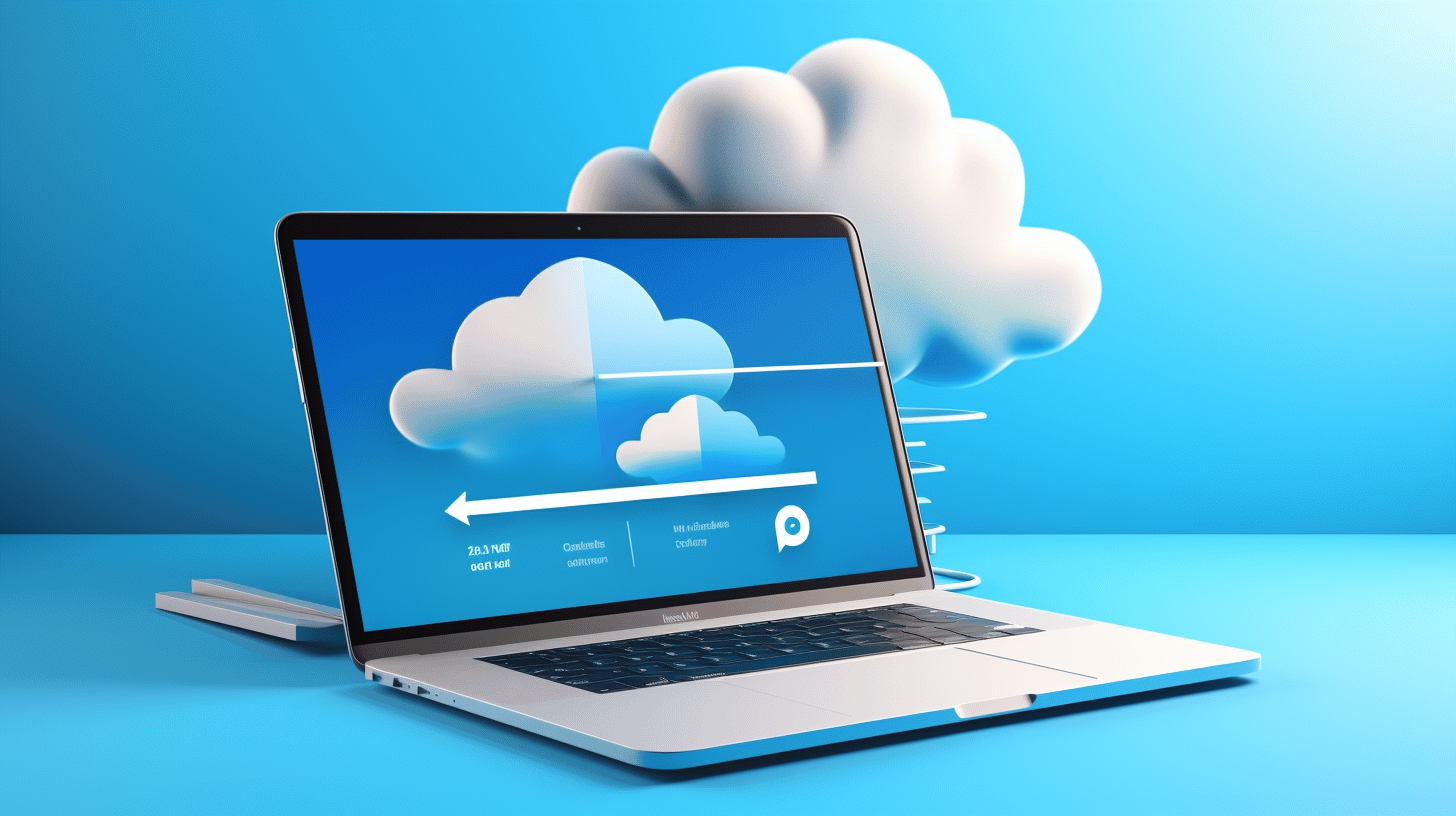在當今的數位環境中,擁有強大的線上影響力對於企業和個人來說都至關重要。在建立和維護網站方面,WordPress 已成為一個流行且可靠的平台。 WordPress 擁有豐富的主題、外掛和自訂選項,讓使用者可以輕鬆建立美觀、實用且使用者友善的網站。
但是,與任何軟體一樣,WordPress 需要定期更新和備份以確保最佳效能和安全性。雖然跳過這些任務或忽略其重要性可能很誘人,但這樣做可能會使您的網站容易受到安全漏洞、錯誤和其他問題的攻擊,從而可能損害您的品牌聲譽和線上形象。
在本文中,我們將探討定期更新和備份 WordPress 的重要性,並討論一些最佳實踐,以幫助您控制網站的效能和安全性。所以,繫好安全帶,讓我們開始吧! 🚀
🔒 安全增強:
定期更新對於維護 WordPress 網站的安全性至關重要。 🛡️ WordPress 是全球最受歡迎的內容管理系統 (CMS),這也使其成為駭客和網路攻擊的主要目標。更新您的 WordPress 版本、主題和外掛程式有助於保護您的網站免受駭客利用的漏洞。
以下是定期更新對於增強安全性發揮關鍵作用的一些原因:
- 修補漏洞: 更新通常包括解決 WordPress 核心、主題和外掛程式中已知漏洞的安全性修補程式。駭客可以利用這些漏洞來未經授權存取您的網站或註入惡意程式碼。透過保持一切最新,您可以降低成為這些攻擊受害者的風險。
- 安全審計: 由於有專門的團隊進行安全審核,WordPress 會定期發布以安全為重點的更新。這些更新通常會在用戶身份驗證、資料加密和整體系統穩定性等領域引入改進。保持更新可確保您受益於最新的安全增強功能。
- 外掛和主題更新: 過時的外掛程式和主題可能會對您的 WordPress 網站造成嚴重的安全風險。開發人員頻繁發布更新來修復潛在的安全漏洞。透過定期更新您的外掛程式和主題,您可以減少您的網站成為網路犯罪分子目標的機會。
🐞 錯誤修復:
保持 WordPress 網站更新的另一個重要原因是解決和修復錯誤。 🐛 錯誤會影響您網站的功能,導致錯誤、崩潰,甚至損害使用者體驗。定期更新可確保及時修復任何報告的錯誤並確保您的網站順利運作。
這就是為什麼錯誤修復至關重要:
- 改進的性能: 修復錯誤不僅僅是為了解決錯誤。他們還優化程式碼並提高您的 WordPress 網站的整體效能。更快的載入時間和更流暢的使用者互動有助於提供更好的使用者體驗,從而對您網站的成功產生積極影響。
- 相容性: 錯誤可能導致不同主題、外掛甚至 WordPress 核心本身之間的衝突。定期更新有助於確保及時解決這些相容性問題。透過保持更新,您可以避免由於軟體過時而可能出現的相容性問題。
✨ 新特性和功能:
更新您的 WordPress 網站使您能夠利用令人興奮的新功能和功能。 WordPress 的每個新版本都會帶來增強功能,可以改善使用者體驗、簡化工作流程並擴展網站的功能。
保持 WordPress 更新的最新狀態可以為您帶來以下好處:
- 增強的使用者體驗: 更新通常會引入可用性改進和新功能以增強使用者體驗。這些改進包括對區塊編輯器的變更、新的媒體管理功能或改進的介面元素。透過定期更新,您可以確保訪客能夠存取 WordPress 提供的最新功能和增強功能。
- 擴充功能: 隨著 WordPress 的發展,新的功能也透過更新而開發和整合。這些可以包括從改進的 SEO 功能到高級的安全選項。透過讓您的 WordPress 安裝保持最新,您可以利用這些新功能來增強您網站的效能和效率。
透過保持您的 WordPress 網站更新,您不僅可以確保其安全性和穩定性,還可以開啟一個充滿新可能性的世界。因此,不要錯過這些定期更新帶來的好處。立即更新您的 WordPress 版本、主題和插件,保持領先!
有關 WordPress 最新版本及其功能的更多詳細信息,請查看 最新 WordPress 版本功能.
🔒對於任何網站所有者或管理員來說,維護一個順暢可靠的 WordPress 網站都至關重要。其中一個關鍵方面是 定期更新您的 WordPress 安裝及其組件。更新不僅帶來新功能和功能,還解決安全漏洞並修復可能影響您網站的效能和穩定性的錯誤。
定期更新
⚡️定期更新 WordPress 網站對於實現最佳效能和安全性至關重要。當新的更新發佈時,及時應用它們很重要。原因如下:
- 安全:WordPress 更新通常包含安全補丁,可協助保護您的網站免受漏洞和潛在攻擊。透過定期更新,您可以確保已採取最新的安全措施。
- 問題修復:更新通常解決 WordPress 核心、主題和外掛程式中的錯誤和故障。這些修復可以增強您網站的穩定性和功能,為您和您的用戶提供更好的體驗。
- 相容性:隨著 WordPress 生態系統的發展,各種主題和外掛可能需要更新才能與最新版本的 WordPress 保持相容。透過定期更新,您可以避免因使用過時的組件而可能出現的相容性問題。
分階段更新
🛠️分階段更新 WordPress 網站有助於降低與重大更新相關的風險。不要立即更新所有內容,請考慮以下方法:
- 備份您的網站:在進行任何更新之前,建立您的網站備份至關重要。這樣,如果在更新過程中出現任何問題,您可以將網站恢復到以前的狀態。
- 更新外掛和主題:首先更新您的外掛和主題。這使您可以在更新 WordPress 核心之前解決任何相容性問題。
- 更新 WordPress 核心:一旦您的外掛和主題更新完畢,請繼續更新 WordPress 核心。這種順序方法可以幫助最大限度地減少衝突並確保更順暢的更新過程。
在臨時站點上測試更新
📝在將更新直接套用到您的即時網站之前,最好先在臨時網站上進行測試。暫存網站是即時網站的相同副本,您可以在其中嘗試更新和更改,而不會影響即時網站的功能。測試更新有益的原因如下:
- 辨識衝突:在臨時網站上測試更新可以讓您識別任何因更新而可能出現的衝突或問題。這使您有機會在將更新應用到您的即時網站之前解決這些問題。
- 確保功能性:透過在受控環境中測試更新,您可以確保網站的所有特性和功能在更新後都能如預期運作。這降低了您的即時網站出現意外停機或功能損壞的風險。
🌟將這些最佳實踐納入您的 WordPress 更新例程將有助於確保您和您的訪客獲得順暢、安全的網站體驗。定期更新、逐步更新和全面測試是維護 WordPress 網站的效能、安全性和穩定性的重要步驟。
想像這樣的場景:您花了數小時精心製作您的 WordPress 網站,傾注了您的創造力和辛勤工作。它是一件傑作,是您的品牌或個人身份的線上反映。但如果災難來臨怎麼辦?如果所有的工作突然失去,而您必須從頭開始,該怎麼辦?
這種噩夢般的情況正是為什麼定期備份對於每個 WordPress 網站所有者來說都至關重要。透過建立備份,您可以保護寶貴的資料並確保在發生事故時可以輕鬆還原您的網站。
以下是 WordPress 備份時需要牢記的一些最佳做法:
定期備份
定期備份是您網站安全和復原策略的支柱。它們提供了一個安全網,讓您可以在出現問題時回滾到網站的先前版本。以下是您需要了解的內容:
- 頻率:根據您發布的內容量以及網站更新或變更的頻率安排定期備份。對於大多數網站來說,每週備份一次就足夠了,但更活躍的網站可能需要每日甚至每小時備份一次。
- 自動備份:利用提供自動備份方案的 WordPress 備份外掛程式。這些插件可以使備份過程無縫且輕鬆。
- 資料庫和檔案備份:確保您的備份包括您的網站的資料庫和檔案。資料庫包含貼文、頁面、評論和設定等重要訊息,而文件包括主題、外掛和媒體上傳。
異地儲存🌍
備份資料很重要,但備份的位置也同樣重要。將備份與您的網站儲存在同一台伺服器上會使它們面臨相同的風險。相反,請考慮異地存儲選項:
- 雲端儲存:利用 Dropbox、Google Drive 或 Amazon S3 等服務將您的備份安全地儲存在異地。這些平台提供可靠的儲存和高水準的安全措施來保護您的資料。
- 遠端伺服器:如果您喜歡自託管解決方案,則可以設定專門用於備份儲存的單獨伺服器。這種隔離可確保即使主伺服器出現問題,您的備份也是安全的。
重大更改前備份✅
對您的 WordPress 網站進行重大更改(例如更新主題或外掛程式、編輯核心文件或實施設計變更)可能會導致問題。為了防止資料遺失並方便輕鬆恢復,請養成在進行任何重大修改之前執行備份的習慣。
- 外掛或主題更新:在更新外掛程式或主題之前,請建立備份以防止更新時可能出現的相容性問題或意外錯誤。
- 核心更新:WordPress 定期發布其核心軟體的更新。在應用這些更新之前,請建立您的網站的完整備份,以確保您有一個還原點,以防更新過程中出現問題。
總而言之,定期備份、異地儲存以及在重大變更之前建立備份是 WordPress 網站所有者必不可少的最佳實踐。透過遵循這些準則,您可以保護您的辛勤工作成果,最大限度地減少停機時間,並安心地知道您的網站是安全的。請記住,現在投入時間和精力進行備份可以讓您免於將來進行重大麻煩。因此,請優先考慮您的備份並保護最重要的內容—您的 WordPress 網站。 🧡
在科技世界中,更新和備份對於維護任何系統或軟體的平穩運作至關重要。然而,即使經過仔細的規劃和執行,仍可能會出現複雜情況。無論是更新失敗還是需要從備份中恢復,知道如何處理這些情況至關重要。本文將提供有效處理這些複雜問題的見解和技巧。
如何處理失敗的更新
更新旨在提高系統或軟體的功能、安全性和整體效能。然而,有時它們可能會出錯,導致更新失敗且系統無法正常運作。以下是處理這種情況的一些步驟:
- 保持冷靜並評估情況:恐慌可能會導致進一步的併發症。深呼吸並評估更新失敗的影響。系統是否完全無法使用,或是否有可以解決的具體問題?
- 確定原因:了解更新失敗的原因對於找到解決方案至關重要。這可能是由於相容性問題、系統資源不足,甚至是網路問題。檢查錯誤日誌、系統通知或聯絡軟體開發人員尋求協助。
- 復原更新:如果更新失敗導致您的系統無法使用,請考慮將其恢復到先前的工作狀態。這可以透過系統還原點、版本控制系統或還原到備份來完成。
- 如有需要,尋求專業協助:如果您無法自行解決問題,請立即尋求專業協助。聯絡技術支援、軟體開發人員,或諮詢專門解決複雜更新問題的 IT 專家。
請記住,預防勝於治療。為了最大限度地減少更新失敗的可能性:
- 在開始更新之前,請確保您擁有穩定可靠的網路連線。
- 透過定期維護和修補使您的系統保持最新狀態。
從備份中恢復
備份就像您的資料的保險單。它們在發生系統故障、網路安全漏洞或意外資料遺失等不可預見的事件時提供安全網。了解如何從備份中還原對於有效地還原資料至關重要。您需要執行以下操作:
- 評估備份:從備份還原之前,請確保備份可靠且包含最新版本的資料。檢查備份的完整性、一致性和可存取性。
- 確定恢復範圍:決定是否需要還原整個系統還是特定的檔案和資料夾。了解範圍將有助於簡化恢復過程並最大限度地減少停機時間。
- 按照恢復程序:根據您使用的備份解決方案,復原過程可能會有所不同。這些可能包括選擇備份來源、選擇目標位置以及啟動復原程序。
- 驗證恢復的數據:恢復完成後,請花點時間驗證恢復資料的完整性和完整性。測試關鍵功能、執行資料驗證檢查,並將復原的資料與原始來源進行比較(如果可能)。
請記住定期測試您的備份以確保其可靠性和有效性。遵循以下最佳做法:
- 建立與資料的關鍵性和變更頻率相符的備份計畫。
- 將備份儲存在多個位置,包括異地或雲端,以減輕與實體損壞或遺失相關的風險。
處理諸如更新失敗和需要從備份還原等複雜情況可能很有挑戰性,但只要有適當的知識和準備,您就可以有效地處理這些情況。透過了解本文概述的步驟和最佳實踐,您將能夠更好地處理和克服這些障礙,確保系統和資料的連續性和穩定性。 🚀🔒
總之,定期更新和備份對於維護安全且功能正常的 WordPress 網站至關重要。透過遵循更新和備份的最佳實踐,網站所有者可以確保他們的網站免受安全漏洞的侵害、從錯誤修復中受益並利用新功能和功能。
請記住,更新您的 WordPress 網站不是一次性任務,而是持續的過程。需要專注和專注才能及時了解 WordPress 發布的最新更新和安全性修補程式。忽略更新可能會使您的網站容易受到攻擊並損害資料的完整性。因此,請花時間定期更新您的 WordPress 核心、主題和插件,以確保您的網站順利運作。
此外,實施備份策略也同樣重要。透過定期備份您的網站,您可以保護您的數據,並在出現任何問題時輕鬆恢復您的網站。異地儲存可確保即使您的伺服器出現問題,您的備份也是安全的。
當處理諸如更新失敗或需要從備份恢復等複雜情況時,保持冷靜並遵循正確的程序至關重要。如有需要,請查閱 WordPress 提供的資源或尋求合格開發人員的協助。
保持對 WordPress 網站的控制需要保持主動性和知情權。了解定期更新和備份的重要性並實施最佳實踐以最大限度地降低潛在風險並最大限度地提高網站的效能至關重要。
將這些做法納入您的 WordPress 維護程序,您可以確保您的網站保持安全、穩定和最新。因此,立即採取行動並優先進行定期更新和備份以保留對 WordPress 網站的控制。 🚀
常見問題解答
- 我應該多久更新一次 WordPress 網站?
建議定期更新您的 WordPress 網站。一般來說,只要有新版本或安全性修補程式可用,您就應該更新外掛程式、主題和 WordPress 核心。這有助於確保您的網站安全、提高效能並確保與最新功能的兼容性。
- 在更新我的 WordPress 網站之前我該怎麼做?
在更新您的 WordPress 網站之前,請務必備份您的整個網站,包括資料庫、檔案和媒體。此外,請檢查外掛程式和主題與新更新的相容性,並在更新後徹底檢查您網站的功能。
- 是否建議對 WordPress 網站進行自動更新?
自動更新對於 WordPress 網站來說是一個方便的選項,尤其是對於安全性更新。但是,建議在您的即時網站上啟用自動更新之前,先在暫存或本機環境中測試更新。這可確保在影響您的即時網站之前解決任何潛在衝突或問題。
- 是否可以回滾到以前的 WordPress 版本?
如果您有網站備份,則可以回滾到 WordPress 的先前版本。然而,這個過程可能很複雜且耗時。建議諮詢專業人士或遵循 WordPress 提供的詳細指南,以避免任何資料遺失或相容性問題。
- WordPress 備份的最佳實務是什麼?
為了確保您的 WordPress 網站擁有可靠的備份系統,請遵循以下最佳做法:1. 使用信譽良好的備份外掛程式來自動化流程,2. 將備份儲存在多個位置(例如,雲端儲存、本機儲存),3. 定期測試備份以確保其完整性,以及 4. 定期監控備份日誌以識別任何潛在問題。



















